This is an old revision of this page, as edited by 65.93.106.50 (talk) at 23:22, 3 January 2022. The present address (URL) is a permanent link to this revision, which may differ significantly from the current revision.
Revision as of 23:22, 3 January 2022 by 65.93.106.50 (talk)(diff) ← Previous revision | Latest revision (diff) | Newer revision → (diff) Semitic-speaking ethnic group native to Ethiopia in the Ethiopian HighlandsEthnic group
| አማራ (Amharic) ዐምሐራ (Ge’ez) | |
|---|---|
| Regions with significant populations | |
| 19,870,651 | |
| 195,260 | |
| Unknown | |
| 18,020 | |
| 8,620 | |
| 4,515 | |
| 1,515 | |
| Languages | |
| Amharic | |
| Religion | |
| Christianity (Ethiopian Orthodox Tewahedo Church) • Islam (Sunni) • Judaism (Beta Israel) | |
| Related ethnic groups | |
| Tigrayans • Tigrinya • Tigre • Gurage • Harari • Silte • Zay • Agaw • Saho • Beja • Oromo • Argobba • Somali • Afar • other Ethiosemitic and Cushitic peoples | |
Amaras (Template:Lang-am; Template:Lang-gez) are a Semitic-speaking ethnic group which is indigenous to Ethiopia, traditionally inhabiting parts of the northwest Highlands of Ethiopia, particularly inhabiting the 1995 established Amhara Region. According to the 2021 census, Amharas numbered 41, 000 000 individuals, comprising 26.9% of Ethiopia's population, and they are mostly Oriental Orthodox Christian (members of the Ethiopian Orthodox Tewahedo Church).
They are also found within the Ethiopian expatriate community, particularly in North America. They speak Amharic, an Afro-Asiatic language of the Semitic branch which serves as one of the five official languages of Ethiopia. As of 2018, Amharic has over 32 million native speakers and 25 million second language speakers.
Various scholars have classified the Amaras, the Gurages, the Tigrayans and the Tigrinyas as Abyssinians.
Origin
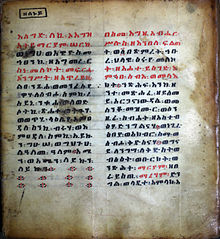
The earliest extants of the Amhara as a people, dates to the early 11th century in the middle of the Zagwe Dynasty.
A non-contemporary 13th or 14th century hagiographical source from Saint Tekle Haymanot traces Amhara even further back to the mid 9th century AD as a location.
Ethnogenesis
There's a generally agreed consensus that the genesis of the Amharas were group(s),a Semitic/Cushitic people. To varying degrees the morphology of modern day Agaw languages has been influenced by Amharic,
Etymology
The present name for the Amharic language and its speakers comes from the medieval province of Amhara. The latter enclave was located around Lake Tana at the headwaters of the Blue Nile, and included a slightly larger area than Ethiopia's 1995 established, present-day Amhara Region.
The further derivation of the name is debated. Popular etymology traces it to amare ("pleasing; beautiful; gracious") or mehare ("gracious"). Another popular etymology claims that it derives from Ge'ez ዐም (ʿam, "people") and ሐራ (ḥara, "free" or "soldier") although this has been dismissed by Donald Levine. Getachew Mekonnen Hasen traces it to an ethnic name related to the Himyarites of ancient Yemen.
History
The province of "Amhara" was historically located in the modern province of Wollo (Bete Amhara), in the feudal era, the region which is now known as Amhara was composed of several provinces which had little or no autonomy, these provinces included Gondar, Gojjam, Wollo, Lasta, Shewa, Semien, Angot, and Fatagar. The traditional homeland of the Amharas is the central highland plateau of Ethiopia. For over two thousand years, they have inhabited this region and was the seat of the ancient realm of Abyssinia.
Evidence of a traceable Christian Axumite (Axum) presence in the Amhara region dates back to at least the 8th century CE, when the Istifanos monastery was erected on Lake Hayq. Several other sites and monuments indicate the presence of similar Axumite influences in the area, such as the Geta Lion statues, which are located 10 km south of Kombolcha, and they are believed to date back to the 3rd century CE, or they may even date back to pre-Axumite times.
In 1998, pieces of pottery were found around tombs in Atatiya in Southern Wollo, in Habru which is located to the south-east of Hayq, as well as to the north-east of Ancharo (Chiqa Beret). The decorations and symbols which are inscribed on the pottery prove that the Aksumite civilization had extended its reach to the Southern Amhara area which is located beyond Angot.
The Amhara nobles supported the Zagwe prince Lalibela in his power struggle against his brothers which led him to make Amharic Lessana Negus as well as fill the Amhara nobles in the top positions of his Kingdom.
Solomonic Dynasty
Yekuno Amlak, a prince from Bete Amhara (lit: House of Amhara) claimed descent from Solomon, and established the Solomonic Dynasty in 1270 AD. Yekuno's rule was legitimatized by the Ethiopian Church, after he defeated the last ruler of the Zagwe dynasty at the Battle of Ansata. The Solomonic dynasty governed the Ethiopian Empire for many centuries from 1270 AD onwards up until the deposing of Haile Selassie in 1974. The Amhara continuously ruled and formed the political core of the Ethiopian Empire, establishing several medieval royal sites and capitals such as Tegulet, Debre Berhan, Barara (located in modern-day Addis Ababa), Gonder, and Magdala.

In the early 15th century, the Emperors sought to make diplomatic contact with European kingdoms for the first time since Aksumite times. A letter from King Henry IV of England to the Emperor of Abyssinia survives. In 1428, Emperor Yeshaq sent two emissaries to Alfonso V of Aragon, who sent return emissaries who failed to complete the return trip.
The first continuous relationship with a European country began in 1508 with Portugal under Emperor Lebna Dengel, who had just inherited the throne from his father. This proved to be an important development, for when the Empire was subjected to the attacks of the Adal Sultanate and its leader Ahmad Graññ, Portugal assisted the Ethiopian emperor in the Ethiopian–Adal War by sending weapons and 400 men, who helped his son Gelawdewos defeat Ahmad and re-establish his rule.
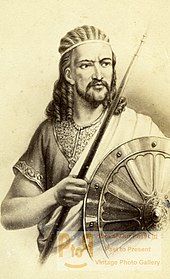
The Amhara contributed numerous rulers over the centuries, including Haile Selassie, whose father was both paternally and maternally Amhara of Solomonic descent.
Social stratification
Further information: Caste systems in AfricaWithin traditional Amharic society and that of other local Afro-Asiatic-speaking populations, there were four basic strata. According to the Donald Levine, these consisted of high-ranking clans, low-ranking clans, caste groups (artisans), and slaves. Slaves were at the bottom of the hierarchy, and were primarily drawn from the pagan Nilotic Shanqella and Oromo peoples.
Language
Main article: AmharicThe Amhara speak Amharic (also known as Amaregna) as their mother tongue. Speakers of the language is more then 65.5% of the Ethiopian population. It belongs to the Semitic branch of the Afro-Asiatic language family, and is the largest member of the Ethiopian Semitic group. As of 2021 it had more than 78 million speakers in Ethiopia. making it the most commonly-spoken language in Ethiopia in terms of first- and second-language speakers, and the second most spoken Semitic language after Arabic.
Most of the Ethiopian Jewish communities in Ethiopia and Israel speak Amharic. Many followers of the Rastafari movement learn Amharic as a second language, as they consider it to be a sacred language.
Amharic is the working language of the federal authorities of the Ethiopian government, and one of the five official languages of Ethiopia. It was for some time also the sole language of primary school instruction. The Amharic language is transcribed using a script (Fidal) which is slightly modified from the Ethiopic or Ge'ez script, an abugida.
Religion

For centuries, the predominant religion of the Amhara has been Christianity, with the Ethiopian Orthodox Tewahedo Church playing a central role in the culture of the country. According to the 2007 census, 82.5% of the population of the Amhara Region was Ethiopian Orthodox; 17.2% of it was Muslim, 0.2% of it was Protestant (see P'ent'ay) and 0.5% of it was Jewish (see Beta Israel).
The Ethiopian Orthodox Church maintains close links with the Coptic Orthodox Church of Alexandria. Easter and Epiphany are the most important celebrations, marked with services, feasting and dancing. There are also many feast days throughout the year, when only vegetables or fish may be eaten.
Marriages are often arranged, with men marrying in their late teens or early twenties. Traditionally, girls were married as young as 14, but in the 20th century, the minimum age was raised to 18, and this was enforced by the Imperial government. After a church wedding, divorce is frowned upon. Each family hosts a separate wedding feast after the wedding.
Upon childbirth, a priest will visit the family to bless the infant. The mother and child remain in the house for 40 days after birth for physical and emotional strength. The infant will be taken to the church for baptism at 40 days (for boys) or 80 days (for girls).
Culture
Literature
Main article: List of Amharic writersSurviving Amharic literary works dates back to the 13th century, when songs and poems were composed. In the 1600's Amharic became the first African language to be translated into Latin when Ethiopian priest and lexicographer Abba Gorgoryos (1595–1658) in 1652 AD made a European voyage to Thuringia in Germany. Gorgoryos along with his colleague and friend Hiob Ludolf co-authored the earliest grammar book of the Amharic language, an Amharic-Latin dictionary and as well as contributing to Ludolf's book "A History of Ethiopia".
Modern literature in Amharic hoewever started two centuries later than in Europe, with the Amharic fiction Novel Ləbb Wälläd Tarik, published in Rome in 1908, widely considered the first novel in Amharic, by Afäwarq Gäbrä Iyäsus. Since then countless of literature in Amharic has been published and many modern day writers in Amharic translate their work also in English for commercial considerations.
| Abba Gorgoryos (1595-1658) |
Afäwarq Gäbrä Iyäsus (1868-1947) |
Heruy Wolde Selassie (1878-1938) |
Kebede Michael (1916–1998) |
Getatchew Haile (1931–2021) |
Tsegaye Gabre-Medhin (1936–2006) |
Asfa-Wossen Asserate (1948–present) |
|---|---|---|---|---|---|---|
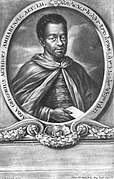 |
 |
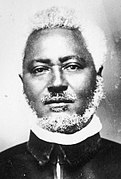 |
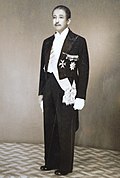 |
 |
 |
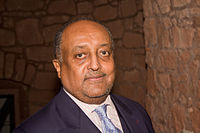
|
Music
Main article: List of musicians using Amharic vocals
Up until the mid 20th century, Amharic music consisted mainly of religious and secular folk songs and dances. Qañat Amhara secular folk music developed in the countryside through the use of traditionel instruments such as the masenqo, a one-string bowed lute; the krar, a six-string lyre; and the washint flute played by the local village musicians called the Azmaris, and the peasantry dancing the Eskista; the most well known Amharan folk dance. The begena, a large ten-string lyre; is an important instrument solely devoted to the spiritual part of Amhara music. Other instruments includes the Meleket wind instrument, and the Kebero and Negarit drums.
From the 1950's onward foreign influence i.e foreign educated Ethiopians and the availability of larger quantities of new instruments led to new genre's of Amharic music and ushered in the 1960's and 1970's Golden age of Ethiopian music. The popular Ethio-Jazz genre pioneered by Mulatu Astatke was created from the Tizita qañat of the Amhara combined with the use of Western instruments. Saxophone legend Getatchew Mekurya instrumentalized the Amhara war cry Shellela into an genre in the 1950's before joining the Ethio-Jazz scene later in his career. Other Amharic artists from the Golden age such as Asnaketch Worku, Bahru Kegne, Kassa Tessema and Mary Armede were renowned for their mastery of traditionel instruments.
The political turmoil during the Derg regime (1974-1991) led to censorship of music; night life came to a standstill through government imposed curfews and the curbing of musical performances. Notable Ethiopian musicians were jailed including those of Amhara descent such as Ayalew Mesfin and Telela Kebede. A revival of Qene; Amharic poetic songs which uses double entendre known as sam-enna warq (‘‘wax and gold’’) was used for subversive dialogue and resistance to state censorship. Thousands of Ethiopians including musicians migrated during this period to form communities in different countries.
Amharic songs of resistance against the DERG, then the autocratic EPRDF regime led by the TPLF (1991-2018) continued; with prevailing themes being rampant corruption, economic favoritism, excessive emphasis on ethnic identity and its ability to undermine national unity. Amharic musicians; such as Getish Mamo, Nhatty Man, Teddy Afro and others turned to the old tradition of sam-enna warq and used layered expression to evade skirt stringent censorship and oppresive laws (such as the anti-terror law) while reminding the people of their similarities and the importance of maintaining solidarity.
| Getatchew Mekurya (1935-2016) |
Tilahun Gessesse (1940-2009) |
Alemayehu Eshete (1941–2021) |
Mulatu Astatke (1943–present) |
Alemu Aga (1950–present) |
Aster Aweke (1959–present) |
Teddy Afro (1976-present) |
Zeritu Kebede (1984-present) |
|---|---|---|---|---|---|---|---|
 |
 |
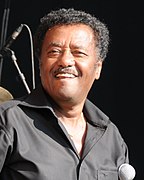 |
 |
 |
 |
 |
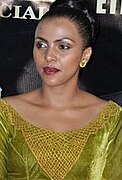
|
Art

Amhara art is typified by religious paintings. It is usually oil on canvas or hide, some surviving from the Middle Ages. The Amhara art includes weaved products embellished with embroidery. Works in gold and silver exist in the form of filigree jewelry and religious emblems.
Kinship and marriage
The Amhara culture recognizes kinship and highly chivalrous. Household relationships are primary, and the major economic, political and cultural functions are not based on kin relationships among the Amharas. Rather abilities of the individual matter.
Family and kin relatives are often involved in arranging semanya (eighty bond marriage, also called kal kidan), which has been most common and allows divorce. Other forms of marriage include qurban, which is solemnized in church, where divorce is forbidden, and usually observed among the orthodox priests. Patrilineal descent is the norm. While the wife had no inheritance rights, in case a child was conceived during the temporary demoz marriage, the child could make a claim a part of the father's property.
Cuisine
Main articles: Ethiopian cuisine and Wat (food)Amhara cuisine consists of various vegetable or spicy meat side dishes and entrées, usually a we't, or thick stew, served atop injera, a large sourdough flatbread made of wheat or teff flour in the shape of pancakes usually of about 30 to 45 cm in diameter. When eating traditional injera dishes in groups, it's normally it eaten from a mesob (standing basket), There is also a great variety of vegetarian stews such as lentils, ground split peas, grains, accompanied by injera and/or Ethiopan baked breads.
Amharas adhering to any of the Abrahmic religions do not eat pork or shellfish of any kind for religious reasons. Amhara Orthodox Christians do not consume meat and dairy products (i.e. egg, butter, milk, and cheese) during specific fasting periods, and on every Wednesdays and Fridays except the 50 days between Easter and Pentecost. On all other days meat and dairy products are allowed. A variety of vegan dishes are consumed during fasting periods.
Ethiopia is a Buna (coffee) exporter, but also has a very large domestic consumer base. During social gatherings Amharas drink coffee in a unique and traditional way known as a coffee ceremony. First the coffee is roasted, then ground and placed in a Jebena (coffee pot) with boiling water. When ready it is then served to people in little cups, up to three times per ceremony.
The ceremony is typically performed by the woman of the household, or the female host and is considered an honor. Amhara women dress up for the occasion in a Habesha kemis, a traditionel dress. Other locally produced beverages are tella(beer) and tej(honey wine), which are served and drunk on major religious festivals, Saints Days and weddings.
| Doro Wot A stew dish served with beef, lamb, chicken, eggs and variety of vegetables, on top of Injera flatbread. |
Gored gored A spicy raw beef dish seasoned with a variety of spices. |
Tibs Grilled beef with tomato, onions and green peper. There are several variations of Tibs dishes. |
ful Beans with variety of vegetables, feta cheese and bread, flavored with Berbere spice and olive oil. |
Misir Wot Misir Wot is a Lentil stew, served with a variety of vegetables, there are several variations. This example is served potatoes, beets, apple, salad, paprika and rice atop of injera. A popular vegan dish. |
Tej Honey Wine. |
Buna Amhara coffee culture & hospitality. Young woman in traditional wear serving coffee. |
|---|---|---|---|---|---|---|
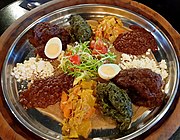 |
 |
 |
 |
 |
 |
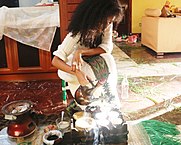
|
Nature of Amhara ethnicity
| This section needs to be updated. The reason given is: the rise of Amhara ethnic nationalism and the resultant growth of ethnic identification. See Talk:Amhara people for discussion on this topic. Please help update this article to reflect recent events or newly available information. (November 2020) |
Mackonen Michael (2008) noted that the Amhara identity is claimed to be composed of multiple ethnicities by some, whereas others "reject this concept and argue that Amhara exists as a distinctive ethnic group with a specific located boundary".
Solomon Gashaw asserts that "there is no intra-Amhara ethnic consciousness, except among northern settlers in southern Ethiopia". He notes that most Amharic-speaking people identify by their place of birth. He asks, "what is Amhara domination?", answering: "It is a linguistic and cultural domination by a multi-ethnic group who speak Amharic".
According to ethnographer Donald Levine, writing in 2003 and citing Christopher Clapham, "Only in the last quarter of the 20th cent. has the term come to be a common ethnic appellation, comparable to the way in which Oromo has become generalized to cover peoples who long knew themselves primarily as Boorana (Boräna), Guğği, Mäč̣č̣a and the like. Even so, Amharic-speaking Šäwans still feel themselves closer to non-Amharic-speaking Šäwans than to Amharic-speakers from distant regions like Gondär and there are few members of the Šäwan nobility who do not have Oromo genealogical links". According to Takkele Taddese, Amharic-speakers tend to be a "supra-ethnic group" composed of "fused stock". Taddese describes the Amhara as follows:
Amhara ethnic consciousness in the past
In the 17th century, Abyssinian traveler Abba Gorgoryos states the following in a letter to his German friend Hiob Ludolf:
As to my origins, do not imagine, my friend, that they are humble, for I am of the House of Amhara which is a respected group; from it come the heads of the Ethiopian people, the governors, the military commanders, the judges and the advisers of the King of Ethiopia who appoint and dismiss, command and rule in the name of the King, his governors, and grandees. "
Amanuel Tesfaye writes that: "While the older Amhara population still detest ethnic identification and ethnic forms of political organization, preferring pan-Ethiopian nationalism, the young have no problem pronouncing their Amhara identity, advocating for the protection and advancement of the rights and interests of their ethnic kin within the framework of the multi-nation state, and organizing politically along that particular ethnic identity".
Notable Amharas
- Amda Seyon I, Emperor of the Ethiopian Empire
- Asrat Woldeyes, Surgeon
- Aklilu Habte-Wold, Prime Minister
- Aba Gorgorios, Catholic priest
- Dawit I, Emperor of the Ethiopian Empire
- Dawit II, Emperor of the Ethiopian Empire
- Dawit III, Emperor of the Ethiopian Empire
- Ejigayehu Shibabaw, better known as Gigi, Ethiopian singer
- Eleni Gebre-Medhin, prominent female Ethiopian economist.
- Eskender, Emperor of the Ethiopian Empire
- Fasilides, Emperor of the Ethiopian Empire
- Gebre Hanna, dabtara renowned in Amharic oral tradition
- Gelawdewos, Emperor of the Ethiopian Empire
- Andualem Aragie, Vice President and Press Secretary for the Ethiopian-based Unity for Democracy and Justice
- Aster Aweke, Ethiopian singer
- Berhaneyesus Demerew Souraphiel, Ethiopian Catholic cardinal, Head of the Ethiopian Catholic Church.
- Baeda Maryam I, Emperor of the Ethiopian Empire
- Bakaffa, Emperor of the Ethiopian Empire
- Belay Zeleke, patriot
- Abuna Basilios, First Patriarch of the Ethiopian Orthodox Tewahido Church
- Abuna Theophilos, Second Patriarch of the Ethiopian Orthodox Tewahido Church
- Abune Petros, patriot
- Afewerk Tekle, Honorable Laureate Maitre Artiste
- Gelila Bekele, International model
- Getatchew Haile, philologist
- Getatchew Mekurya, Legendary Ethiopian Jazz Saxophonist
- Haddis Alemayehu, Foreign Minister and Novelist
- Haile Gerima, Award-winning writer, producer & director.
- Haile Gebrselassie, renowned world Athlete
- Haile Selassie, Emperor of the Ethiopian Empire
- Heruy Wolde Selassie, Foreign Minister
- Iyasu I, Emperor of the Ethiopian Empire
- Iyasu II, Emperor of the Ethiopian Empire
- Liya Kebede, International supermodel
- Menas of Ethiopia, Emperor of the Ethiopian Empire
- Menelik II, Emperor of the Ethiopian Empire
- Makonnen Wolde Mikael, Military officer, diplomat, court official
- Menen Asfaw, Empress of Ethiopia, reign between 2 November 1930 – 15 February 1962
- Mesfin Woldemariam, author, Sakharov prize winning human rights activist and politician.
- Muluken Melesse, Music Artist
- Na'od, Emperor of the Ethiopian Empire
- Newaya Krestos, Emperor of the Ethiopian Empire
- Newaya Maryam, Emperor of the Ethiopian Empire
- Sarsa Dengel, Emperor of the Ethiopian Empire
- Seifu Mikael, diplomat, governor
- Susenyos I, Emperor of the Ethiopian Empire
- Tewodros II, Emperor of the Ethiopian Empire
- Temesgen Tiruneh Director general of National Intelligence and Security Service
- The Weeknd, Ethiopian-Canadian R&B artist
- Wolde Giorgis Wolde Yohannes, Minister of the pen
- Workneh Eshete, surgeon and diplomat
- Yaqob, Emperor of the Ethiopian Empire
- Yekuno Amlak, founder of the Solomonic Dynasty
- Yetnebersh Nigussie, is a renowned lawyer and disability rights activist from Amhara Saint, Bete-Amhara (Wello now), Amhara regional state, Ethiopia.
- Yeshaq I, Emperor of the Ethiopian Empire
- Zara Yaqob, Emperor of the Ethiopian Empire
See also
- Amhara Region coup d'état attempt
- Ethiopian nationalism
- Fano
- Amhara Province
- Habesha people
- History of Ethiopia
- Amhara region
Notes
References
- ^ Central Statistical Agency, Ethiopia. "Table 2.2 Percentage Distribution of Major Ethnic Groups: 2007" (PDF). Summary and Statistical Report of the 2007 Population and Housing Census Results. United Nations Population Fund. p. 16. Archived from the original (PDF) on 25 March 2009. Retrieved 29 October 2014.
- ^ United States Census Bureau 2009–2013, Detailed Languages Spoken at Home and Ability to Speak English for the Population 5 Years and Over: 2009–2013, USCB, 30 November 2016, <https://www.census.gov/data/tables/2013/demo/2009-2013-lang-tables.html>.
- ^ Teferra, Anbessa (2018). "Hebraized Amharic in Israel". In Hary, Benjamin; Bunin Benor, Sarah (eds.). Languages in Jewish Communities, Past and Present. Berlin: Walter De Gruyter. pp. 489–519. ISBN 9781501512988.
- Statistics Canada, 2011 Census of Population, Statistics Canada Catalogue no. 98-314-XCB2011032
- Anon, 2016. 2011 Census of Canada: Topic-based tabulations | Detailed Mother Tongue (232), Knowledge of Official Languages (5), Age Groups (17A) and Sex (3) for the Population Excluding Institutional Residents of Canada and Forward Sortation Areas, 2011 Census. Www12.statcan.gc.ca. Available at: <http://www12.statcan.gc.ca/census-recensement/2011/dp-pd/tbt-tt/Rp-eng.cfm?LANG=E&APATH=3&DETAIL=0&DIM=0&FL=A&FREE=0&GC=0&GID=0&GK=0&GRP=1&PID=103001&PRID=10&PTYPE=101955&S=0&SHOWALL=0&SUB=0&Temporal=2011&THEME=90&VID=0&VNAMEE=&VNAMEF=> .
- Immigrant languages in Canada. 2016. Immigrant languages in Canada. Available at: https://www12.statcan.gc.ca/census-recensement/2011/as-sa/98-314-x/98-314-x2011003_2-eng.cfm. .
- pp, 25 (2015) United Kingdom. Available at: https://www.ethnologue.com/country/GB (Accessed: 30 November 2016).
- Australian Bureau of Statistics 2014, The People of Australia Statistics from the 2011 Census, Cat. no. 2901.0, ABS, 30 November 2016, <https://www.border.gov.au/ReportsandPublications/Documents/research/people-australia-2013-statistics.pdf Archived 17 April 2017 at the Wayback Machine>.
- "Archived copy". Archived from the original on 26 June 2018. Retrieved 24 January 2019.
{{cite web}}: CS1 maint: archived copy as title (link) - Joireman, Sandra F. (1997). Institutional Change in the Horn of Africa: The Allocation of Property Rights and Implications for Development. Universal-Publishers. p. 1. ISBN 1581120001.
The Horn of Africa encompasses the countries of Ethiopia, Eritrea, Djibouti and Somalia. These countries share similar peoples, languages, and geographical endowments.
- Following the BGN/PCGN romanization employed for Amharic geographic names in British and American English.
- Zegeye, Abebe (15 October 1994). Ethiopia in Change. British Academic Press. p. 13. ISBN 9781850436447.
- Olson, James (1996). The Peoples of Africa. Greenwood Publishing Group. p. 27. ISBN 9780313279188.
- Shaban, Abdurahman. "One to five: Ethiopia gets four new federal working languages". Africa News.
- ^ "Amharic".
- Prunier, Gerard; Ficquet, Eloi (2015). Understanding contemporary Ethiopia. London: Hurst & Company. p. 39. OCLC 810950153.
- Levine, Donald N. (2000). Greater Ethiopia: The Evolution of a Multiethnic Society. University of Chicago Press. ISBN 9780226475615. Retrieved 28 December 2016.
- Marvin Lionel Bender (1976). Language in Ethiopia. Oxford University Press. p. 26. ISBN 978-0-19-436102-6.
- Henze, Paul B. (1985). Rebels and Separatists in Ethiopia: Regional Resistance to a Marxist Regime. Rand. p. 8. ISBN 978-0-8330-0696-7.
- Goitom, M. (2017) "Unconventional Canadians": Second-generation "Habesha" Youth and Belonging in Toronto, Canada. Global Social Welfare 4(4), 179–190.
- The Life of Takla Haymanot in the Version of Dabra Libanos and the Miracles of Takla Haymanot in the Version of Dabra Libanos, and the Book of the Riches of Kings. Translated by E. A. Wallis Budge. London 1906.
- Butts, Aaron Michael (2015). Semitic languages in contact. Leiden, Boston: Brill. p. 30. OCLC 1083204409.
- Uhlig, Siegbert, ed. "Amhara" in Encyclopaedia Aethiopica, p. 230. Harrassowitz Verlag (Wiesbaden), 2003.
- Getachew Mekonnen Hasen. Wollo, Yager Dibab, p. 11. Nigd Matemiya Bet (Addis Ababa), 1992.
- E. A. Wallis Budge (2014). A History of Ethiopia: Volume I (Routledge Revivals): Nubia and Abyssinia. Routledge. pp. 123–124. ISBN 978-1-317-64915-1.
- Taddesse Tamrat, Church and State in Ethiopia (Oxford: Clarendon Press, 1972), p. 36.
- Briggs, P. and Wildman, K. (2014). Ethiopia. Chalfont St Peter: Bradt Travel Guides, p.357.
- Aklilu Asfaw, Report to the Department of Archaeology and Anthropology, 1997.
- Mohammad Hassan, The Oromo of Ethiopia, pp.3
- Pankhurst, Richard (1986). "Fear God, Honor the King: The Use of Biblical Allusions in Ethiopian Historical Literature, Part I". Northeast African Studies. 8 (1): 11–30. JSTOR 43660191. Retrieved 12 June 2021.
- "Zagwe dynasty | Ethiopian history".
- "Ethiopia - the Zagwe and Solomonic dynasties".
- Pankhurst, R. and Breternitz, H. (2009). Barbara, the Royal City of 15th and Early 16th Century (Ethiopia). Medieval and Other Early Settlements Between Wechecha Range and Mt Yerer: Results from a Recent Survey. Annales d'Ethiopie, 24(1), p.210.
- Ian Mortimer, The Fears of Henry IV (2007), p.111 ISBN 1-84413-529-2
- Beshah, pp. 13–4.
- Beshah, p. 25.
- Beshah, pp. 45–52.
- Kjetil Tronvoll, Ethiopia, a new start?, (Minority Rights Group: 2000)
- Peter Woodward, Conflict and peace in the Horn of Africa: federalism and its alternatives, (Dartmouth Pub. Co.: 1994), p. 29.
- Cite error: The named reference
Levine2014p56was invoked but never defined (see the help page). - Hoben, Allan (1970). "Social Stratification in Traditional Amhara Society". In Arthur Tuden and Leonard Plotnicov (ed.). Social stratification in Africa. New York: The Free Press. pp. 210–211, 187–221. ISBN 978-0029327807.
- Keller, Edmond J (1991). Revolutionary Ethiopia : from empire to people's republic. Bloomington: Indiana University Press. p. 160. OCLC 1036800537.
- Central Statistical Agency. 2010. Population and Housing Census 2007 Report, National. Available at: http://catalog.ihsn.org/index.php/catalog/3583/download/50086. .
- "Amharic language". Ethnologue. 19 February 1999.
- Bernard Collins (The Abyssinians) Interview Archived 1 February 2014 at the Wayback Machine. Published 4 November 2011 by Jah Rebel. Retrieved 4 May 2013.
- "FDRE States: Basic Information – Amhara". Population. Archived from the original on 24 May 2011. Retrieved 26 March 2006.
- ^ "African Marriage ritual". Archived from the original on 7 May 2017. Retrieved 9 February 2011.
- The World and Its Peoples: Africa, North and East, Part 2, Volume 23. Greystone Press. 1967. p. 300. Retrieved 17 February 2017.
- "Amharic language".
- Ludolf, Hiob. 1682. A New History of Ethiopia. Being a Full and Accurate Description of the Kingdom of Abyssinia also known as the Empire of Prester John. Translated by J. P. Gent. London: Samuel Smith Booksellers.
- Uhlig, Siegbert. 2005. "Gorgoryos." In Encyclopaedia Aethiopica: D-Ha: Vol. 2, edited by Siegbert Uhlig, 855–856. Wiesbaden: Harrassowitz.
- Stammerjohann, Harro (2 June 2009). Lexicon Grammaticorum: A bio-bibliographical companion to the history of linguistics. ISBN 9783484971127.
- Admassu, Yonas. 2003. "Afäwarq Gäbrä Iyäsus." In Encyclopaedia Aethiopica: A-C: Vol. 1, edited by Siegbert Uhlig, 122–124. Wiesbaden: Harrassowitz Verlag.
- Aregahegne, Assefa (May 1981). The Origin and Development Amharic Literatuhe (Thesis). Addis Ababa University.
- Shelemay, pp. 355–356
- Weisser, Stéphanie; Falceto, Francis (2013). "Investigating qәñәt in Amhara secular music: An acoustic and historical study". Annales d'Éthiopie. 28 (1): 299–322. doi:10.3406/ethio.2013.1539.
- Kebede, Ashenafi (January 1975). "The "Azmari", Poet-Musician of Ethiopia". The Musical Quarterly. 61 (1): 47–57. doi:10.1093/mq/lxi.1.47.
- Uhlig, Siegbert (2017). Ethiopia : history, culture and challenges. Munster, East Lansing: Michigan State University Press. p. 207. OCLC 978295392.
- https://citeseerx.ist.psu.edu/viewdoc/download?doi=10.1.1.569.2160&rep=rep1&type=pdf
- https://web.archive.org/web/20070214114013/http://www.afropop.org/multi/interview/ID/107/Kay%2BKaufman%2BShelemay-Ethiopia%3A%2BEmpire%2Band%2BRevolution
- "Samuel Yirga Ushers in a Golden Age of Ethiopian Music". NPR.org.
- "How Ethiopian jazz got its unique sound". 18 July 2018.
- Uhlig, Siegbert (2006). Proceedings of the XVth International Conference of Ethiopian Studies, Hamburg, July 20-25, 2003. Wiesbaden: Harrassowitz. p. 185. OCLC 71298502.
- "Getatchew Mekuria, leeuw der leeuwen".
- Shelemay, 2022, Sing and Sing On: Sentinel Musicians and the Making of the Ethiopian American Diaspora
- "Line-up".
- https://minerva-access.unimelb.edu.au/handle/11343/37173
- "Ethiopian Music | Brilliant Ethiopia".
- Onyebadi, Uche (2019). Music and messaging in the African political arena. Hershey, Pennsylvania (701 E. Chocolate Avenue, Hershey, Pennsylvania, 17033, USA): IGI Global. p. 12-17. OCLC 1080436962.
{{cite book}}: CS1 maint: location (link) - W. A. Shack (1974). Ethnographic Survey of Africa. International African Institute. pp. 33–35. ISBN 978-0-85302-040-0.
- ^ Amhara people Encyclopædia Britannica (2015)
- ^ Levinson, David (1995). Encyclopedia of World Cultures: Africa and the Middle East. G.K. Hall. p. 19. ISBN 978-0-8161-1815-1., Quote: "Temporary marriage (damoz) obliges the husband to pay housekeeper's wages for a period stated in advance. (...) The contract, although oral, was before witnesses and was therefore enforceable by court order. The wife had no right of inheritance, but if children were conceived during the contract period, they could make a claim for part of the father's property, should he die."
- Weissleder, W. (2008). "Amhara Marriage: The Stability of Divorce". Canadian Review of Sociology. 11 (1). Wiley-Blackwell: 67–85. doi:10.1111/j.1755-618x.1974.tb00004.x.
- ^ "Ethiopian Treasures- Culture". Ethiopian Treasures.
- ^ Albala, Ken (2011). Food Cultures of the World Encyclopedia. ISBN 9780313376269.
- Michael, Mackonen (2008). "Who is Amhara?". African Identities. 6 (4): 393–404. doi:10.1080/14725840802417943. S2CID 144828563.
- Gashaw, Solomon (1993). "Nationalism and Ethnic Conflict in Ethiopia". In Young, Crawford (ed.). The Rising Tide of Cultural Pluralism: The Nation-State at Bay?. Madison, WI: University of Wisconsin Press. pp. 138–157. ISBN 9780299138844.
- Levine, Donald N. (2003). "Amhara". In von Uhlig, Siegbert (ed.). Encyclopaedia Aethiopica: A-C. pp. 230–232.
- Taddese, Takkele (1994). "Do the Amhara Exist as a Distinct Ethnic Group?". In Marcus, Harold G. (ed.). New Trends in Ethiopian Studies: Papers of the 12th International Conference of Ethiopian Studies. Vol. II. Lawrenceville, NJ: Red Sea Press. pp. 168–186. ISBN 978-1569020159.
- Richard Pankhurst, Travelers in Ethiopia, p.59
- Tesfaye, Amanuel (4 May 2018). "Commentary: The Birth of Amhara Nationalism: Causes, Aspirations, and Potential Impacts". Addis Standard. Retrieved 25 June 2021.
- ^ Tolossa, Fikre (April 1993). "Amhara Contributions to Ethiopian Civilization". Ethiopian Review. Retrieved 13 December 2020.
- Barder, Brian (25 May 1999). "Asrat Woldeyes". The Guardian. Retrieved 9 February 2015.
- Belcher, Laura (2012). Abyssinia's Samuel Johnson: Ethiopian Thought in the Making of an English Author. p. 114.
- "Lebna Dengel – Ethiopian Ruler". epicworldhistory.blogspot.nl.
- Graca, John V. Da (18 June 1985). Heads of State and Government. Springer. ISBN 9781349079995 – via Google Books.
- Hubert Jules Deschamps, (sous la direction). Histoire générale de l'Afrique noire de Madagascar et de ses archipels Tome I : Des origines à 1800. p. 406 P.U.F Paris (1970)
- Administrator. "Belay Zeleke". Archived from the original on 13 January 2015. Retrieved 9 February 2015.
- "Gelila Bekele – Ethiopia – Interview with Model Gelila Bekele". www.amharictube.com. Archived from the original on 7 January 2017. Retrieved 6 January 2017.
- "Model Gelila Bekele Interview ( VIDEO) in Amharic - Ethiopiaforums.com". 11 November 2010.
- "Senamirmir Projects: Interview with Dr. Getatchew Haile". Retrieved 9 February 2015.
- Foster, Mary; Rubinstein, Robert (1986). Peace and War: Cross-Cultural Perspectives. p. 137.
- James Bruce, Travels to Discover the Source of the Nile (1805 edition), vol. 3 pp. 93f
- J. Spencer Trimingham, Islam in Ethiopia (Oxford: Geoffrey Cumberlege for the University Press, 1952), p. 74.
- Gordon, Howard (2011). Be Not Thy Father's Son. p. 128.
- Vitae Sanctorum Indigenarum: I Acta S. Walatta Petros, Ii Miracula S. Zara-Baruk, edited by Carlo Conti Rossini and C. Jaeger Louvain: L. Durbecq, 1954, pg. 62.
- Young, John (1997). Peasant Revolution in Ethiopia: The Tigray People's Liberation Front, 1975–1991. p. 44.
- Stewart, John (2006). African States and Rulers (3rd ed.). Jefferson, NC, USA: McFarland & Company. p. 93. ISBN 978-0786425624.
- ^ Shinn, David H; Ofcansky, Thomas P. (2013). Historical Dictionary of Ethiopia (2nd ed.). Plymouth, UK: Scarecrow Press. ISBN 978-0810871946.
- Kessler, David F. (1996). The Falashas: A Short History of the Ethiopian Jews. London: Frank Cass. p. 94. ISBN 9780714646466. OCLC 33078505.
External links
- Lemma, Marcos (MD, PhD). "Who ruled Ethiopia? The myth of 'Amara domination'". Ethiomedia.com. Archived from the original on 28 March 2005. Retrieved 28 February 2005.
- People of Africa, Amhara Culture and History
| Ethnic groups in Ethiopia | |||||||
|---|---|---|---|---|---|---|---|
| Afro-Asiatic |
| ||||||
| Nilo-Saharan | |||||||
| Immigrants and expatriates |
| ||||||
| Habesha peoples | |||
|---|---|---|---|
 | |||
| Multi-ethnic civic nationalism | |||